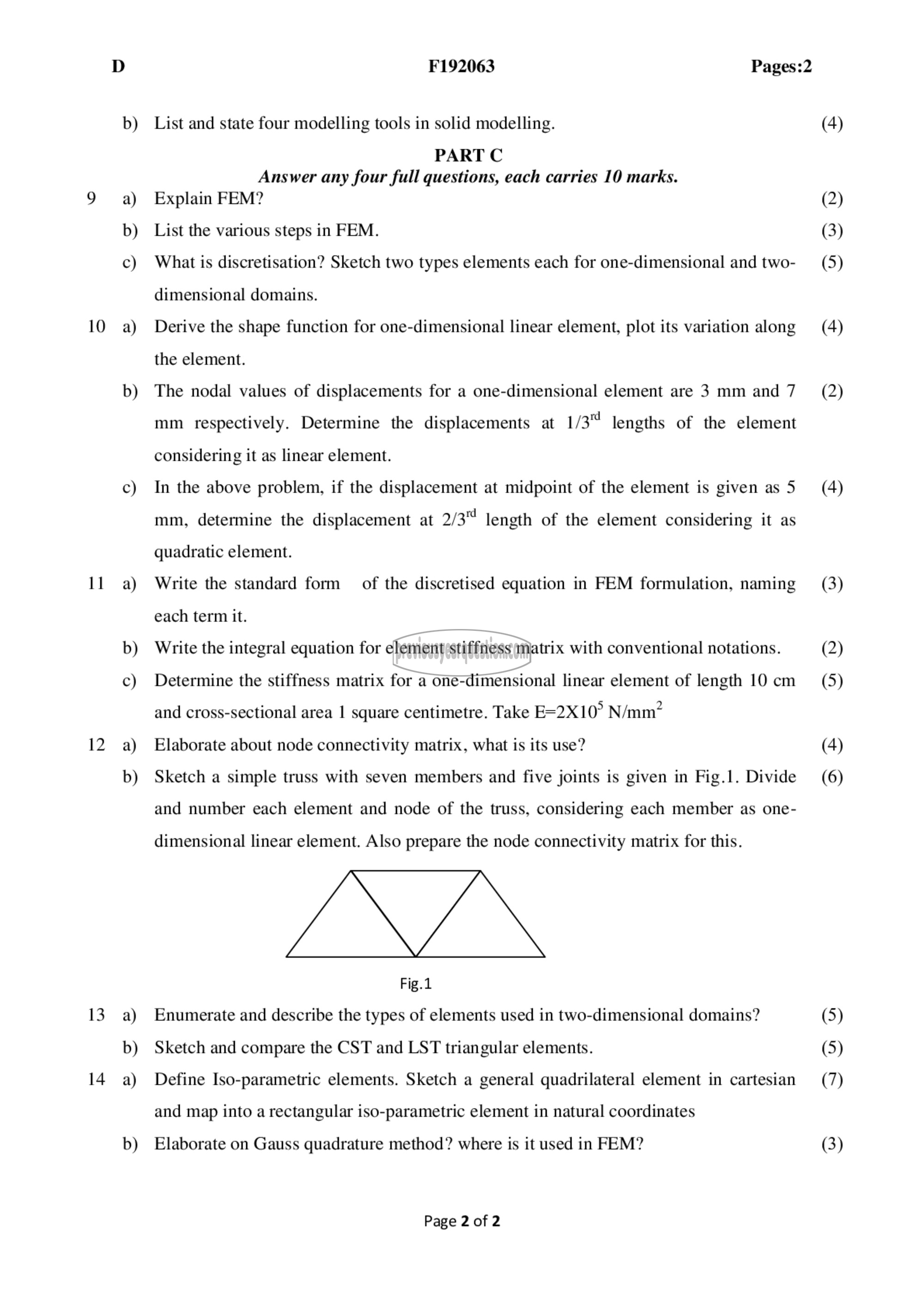APJ ABDUL KALAM TECHNOLOGICAL UNIVERSITY Previous Years Question Paper & Answer
Semester : SEMESTER 6
Subject : Computer Aided Design and Analysis
Year : 2019
Term : DECEMBER
Branch : MECHANICAL ENGINEERING
Scheme : 2015 Full Time
Course Code : ME 308
Page:2
10
1]
12
13
14
b)
8)
b)
a)
b)
a)
b)
a)
b)
F192063 Pages:2
List and state four modelling tools in solid modelling.
PART C
Answer any four full questions, each carries 10 marks.
Explain FEM?
List the various steps in FEM.
What is discretisation? Sketch two types elements each for one-dimensional and two-
dimensional domains.
Derive the shape function for one-dimensional linear element, plot its variation along
the element.
The nodal values of displacements for a one-dimensional element are 3 mm and 7
mm respectively. Determine the displacements at 1/3" lengths of the element
considering it as linear element.
In the above problem, if the displacement at midpoint of the element is given as 5
mm, determine the displacement at 2/3" length of the element considering it as
quadratic element.
Write the standard form of the discretised equation in FEM formulation, naming
each term it.
Write the integral equation for element stiffness matrix with conventional notations.
Determine the stiffness matrix for a one-dimensional linear element of length 10 cm
and cross-sectional area 1 square centimetre. Take E=2X10° N/mm?
Elaborate about node connectivity matrix, what is its use?
Sketch a simple truss with seven members and five joints is given in Fig.1. Divide
and number each element and node of the truss, considering each member as one-
dimensional linear element. Also prepare the node connectivity matrix for this.
Fig.1
Enumerate and describe the types of elements used in two-dimensional domains?
Sketch and compare the CST and LST triangular elements.
Define Iso-parametric elements. Sketch a general quadrilateral element in cartesian
and map into a rectangular iso-parametric element in natural coordinates
Elaborate on Gauss quadrature method? where is it used in FEM?
Page 2 of 2
(4)
(2)
(3)
(5)
(4)
(2)
(4)
(3)
(2)
(5)
(4)
(6)
(5)
(5)
(7)
(3)
